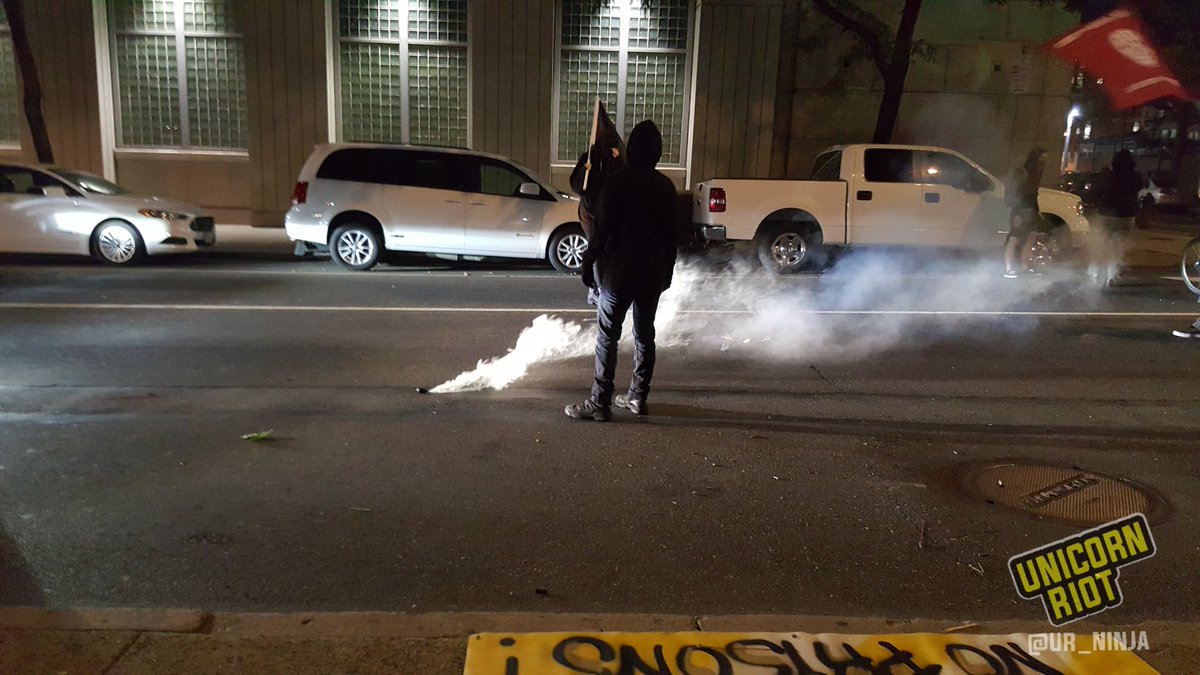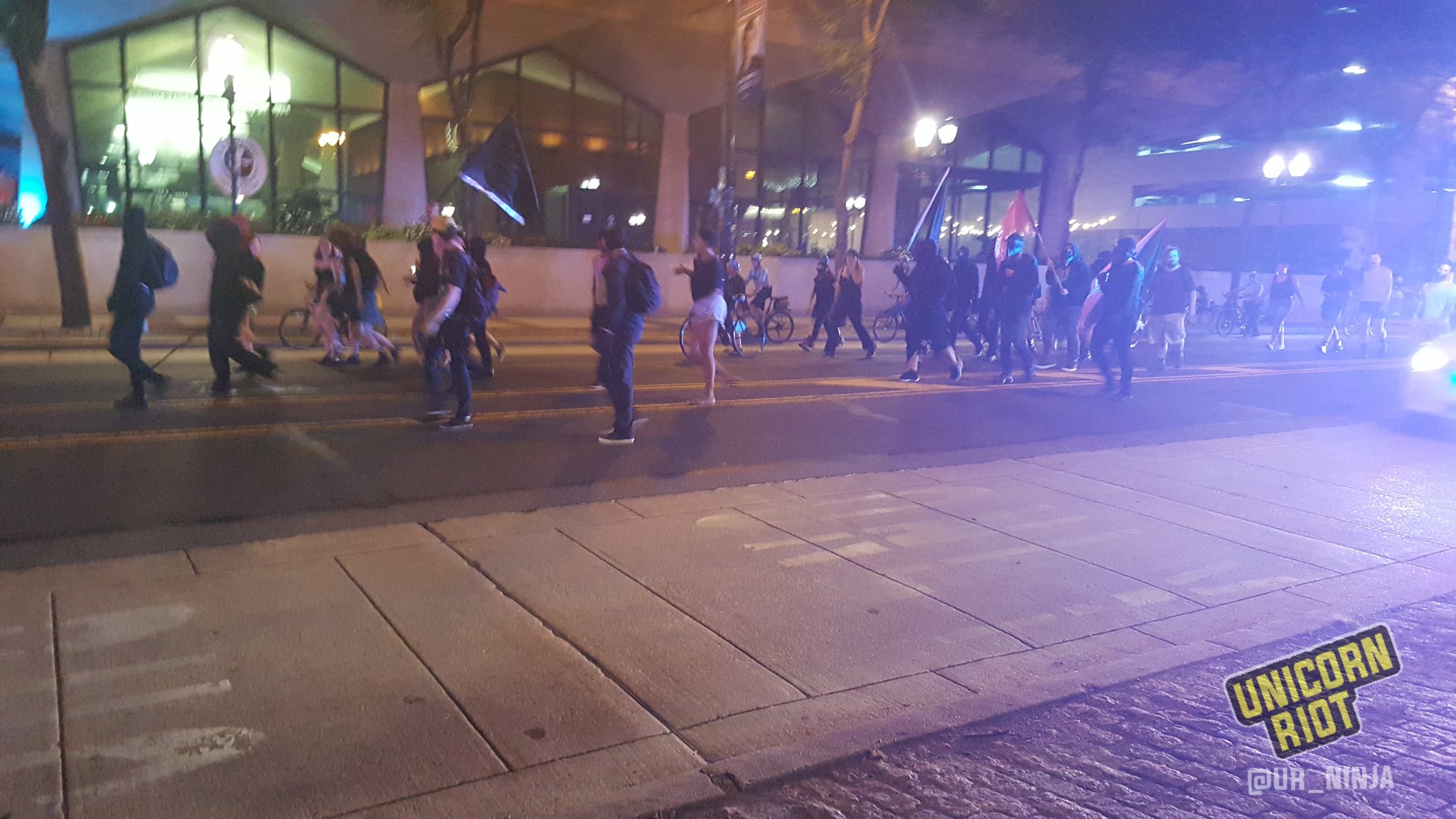from It’s Going Down
Building on their idea of ‘insurrectionary councilism,’ the Radical Education Department lays out an analysis about how to build and gain ground out of social struggles, rather than having it dissipate.
How do we turn revolt into revolution today?
Anticapitalist resistance is surging in the face of a stagnating capitalism and the ruling class’s desperate turn to fascism. But from Occupy and Ferguson to the anti-ICE movement, uprisings are dissipating rather than escalating into fundamental, widespread challenges to ruling class power. Radical movements have struggled to develop the mass organizations and shared revolutionary strategy needed to create such challenges. How can revolutionary anarchists help transform revolt into a crisis of class rule?
A central task for revolutionary anarchists today, I argue, is multiplying and connecting spaces for (a) combining disconnected but sympathetic radical struggles, and above all (b) hammering out shared ideas of mass organizing and planning.
Finally, I ask: how would we create a shared revolutionary program for organization and strategy? What kinds of questions would we need to answer? What specifically could revolutionary anarchism bring to such a program? I end by sketching some of those questions.
The time to build revolutionary power is now.
Why a revolutionary program?
We have the chance to strike a powerful blow against a stumbling enemy.
Capitalism has been stagnating since the financial crisis 11 years ago. It is lurching towards another crisis.[1] Segments of the ruling class are turning to fascism in desperation to crush working-class resistance and restore its profit margins.
Crisis, stagnation, and repression—these are sparking a massive upsurge of revolts like the anti-ICE movement, anti-racist struggles, and militant antifascist, anarchist, socialist, and communist organizing.
But the recent explosions are more widespread and more powerful than we know what to do with. We don’t have the tools we need to connect uprisings into a revolutionary challenge to ruling class power. For instance, the important “Occupy ICE” movement is being swept away without a clear, mass, coordinated plan to build on its gains. The prison strike now faces this danger. “Occupy Wall Street” confronted the same problem. We remain largely reactive to the latest outrage. We struggle to channel radical power in durable ways for definite, large-scale, revolutionary strategic goals.
Too often, radical struggles focus on tactics. We hope that a revolution will come eventually, the accumulation of small-scale victories. Ending capitalism requires more. A systemic problem calls for a systemic solution.
But we also seem to be overwhelmed with revolutionary plans. Many anarchist, socialist, and communist groups have ready-made ideas about tactics, strategy, and organization. Their answers are often disconnected from the concrete mass revolts we are witnessing. Revolutionary programs tend to stay in the activist “silos” that have characterized radical organizing since the 1970s.
And to create a revolution, struggle must be on a mass scale. Capitalist firms exist only by extracting as much surplus as possible from the working class. At the same time, the ruling class pits groups of workers against each other—nation against nation, white workers against workers of color, men against women, cis-gendered people against non-binary people, the employed against the unemployed. White supremacy, patriarchy, transphobia, ableism—these help cement the racist, patriarchal bourgeoisie’s power. When workers fight each other, the ruling class can continue exploiting, dominating, colonizing, and waging imperial war. Radically challenging capitalism means widespread, intersectional class power that refuses to play capital’s games of domination.
The task ahead is combination, not isolation, of revolutionary efforts to help build the intersectional organizations we need. Combination here doesn’t mean an insipid “left unity.” It means connecting the various antiauthoritarian (even if not explicitly anarchist) currents that often lie at the heart of the most powerful struggles against capitalism, colonialism, patriarchy, and white supremacy today. More broadly, it means coordinating, across far left ideological and community divides, the radical struggles that can work effectively together without endless bickering—and that often informally overlap anyway.
All of this means the most pressing questions for radicals today are about strategy and organization. One of the most important things revolutionary anarchists can do, I suggest, is help create, multiply, and federate experimental spaces to hammer out collaborative answers to those questions. (Some of us in RED have begun experimenting with such spaces; see this and this).
I don’t offer my own revolutionary program here. Members of RED have a few contributions on this front—see this, this, and this. And for an interesting response and critique, see this.
My goal here is only to help spur the kind of shared, widespread discussions we need for building mass revolutionary plans.







